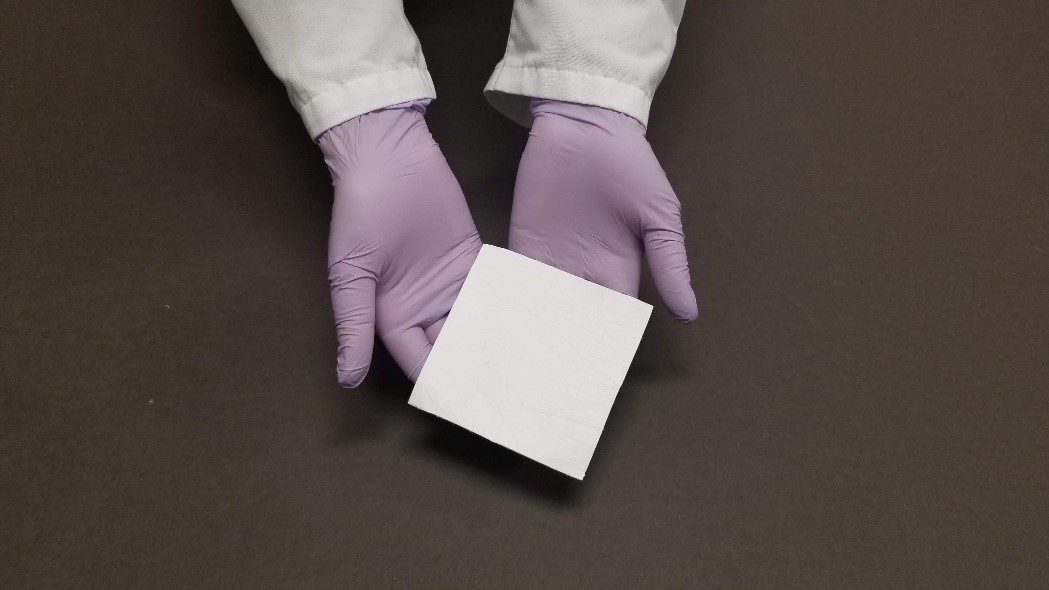The United Soybean Board teamed up with The Yield Lab Institute and AWS Startups to create the Soy Innovation Challenge, where entrepreneurs use new technology and U.S. Soy to solve sustainability challenges. The Soy Innovation Challenge provides mentorship, networking, training and soy checkoff funding to advance their U.S. Soy solutions. Check out the innovations from the four finalists in this article series.
The scars on our skin come with stories — some more painful than others.
For entrepreneur Joseph Connell, founder and CEO of NeuEsse, his scars motivated his career in biotechnology, pharmaceuticals and medical devices. And, they gave him a mission to find better solutions.
When he was 10 years old, Connell received severe burns on 30% of his body from a house fire. He was initially treated in a rural hospital. The long, painful process of skin grafting, or using his own skin to repair the damage on his burned leg, required 360 new wounds. And left significant scarring.
His work in the medical industry led him to provide skin-healing solutions for similar wounds. He marketed the benefits and sought to minimize limitations of standard products in this crowded market.
Then, he found a new, more effective, cost-efficient solution: soy protein.
Unexpected Inspiration
The concept of a soy-based skin replacement came from Peter Lelkes, Ph.D., professor and chair of Temple University’s Bioengineering Department. Connell connected with him through his interest in skin replacement technology.
“The idea sparked when he was at a restaurant in China for a presentation,” Connell says. “He was served fried soy milk, and he noticed that it looked like skin. From that, he developed a process that creates mesh ‘skin’ from soy protein through electrospinning a technology used since the 1940s.”
NeuEsse licensed that technology from Temple University to create OmegaSkin™ and bring the product to people like his 10-year-old self.
“Our innovative, patented technology spins soy protein isolate into a skin substitute treatment that helps our bodies heal burns and wounds,” Connell says. “My mission through NeuEsse is to bring OmegaSkin to market. Soy can save lives. Soy can heal.”
Unique Skin Repair
Current treatments for wounds that need support for healing have limitations.
- Skin grafting, like Connell experienced, creates another wound the body must heal.
- Natural or synthetic skin substitute products come from cows, pigs, human cadavers or other sources, and they are expensive to produce. Many patients around the world reject some of these options for cultural or religious reasons.
- Advanced cellular therapies are expensive or may not be easily accessible for immediate use.
In contrast, the soy protein in OmegaSkin becomes a scaffold for the body to regrow its own skin over a wound or burn.
“Our studies show that OmegaSkin gradually degrades and integrates into wounds,” Connell explains. “It supports the body’s natural wound closure, allowing healing to the full thickness of the skin, while generating functioning hair follicles and sweat glands with minimal to no scarring. It doesn’t create scabs that eventually come off. That is very different than currently available products.”
He adds that with OmegaSkin, wounds also heal with the person’s natural pigmentation and skin color, another advantage compared to current options.
“The cost difference is incredible,” he says. “We can spin soy protein — which is grown in fields in much of the U.S. — for much less that decellularizing skin substitutes from animals or cadavers.”
Unparalleled Potential
Connell believes plant-based OmegaSkin will change the way wounds are treated.
“No one gets through life without damaging their skin,” he says. “Sheets of OmegaSkin will be packaged for direct application on an open wound in any setting. The liquid, sprayable form can be applied touch-free, reducing pain for the patient.”
He also says it has nearly unlimited stability, which means it can be stockpiled for use in emergencies.
The next step for NeuEsse in making it available is securing FDA approval for OmegaSkin. Connell is awaiting final test results needed for that approval, which will allow OmegaSkin to be used on people in the United States. The investment he receives from the Soy Innovation Challenge, regardless of its level, will go toward achieving that milestone.
Once he secures regulatory approval, his company will move forward with development, support production beyond the current small batches manufactured for trials, participate in patient trials with medical schools and more.
He credits the Soy Innovation Challenge with helping him create new connections and spurring his motivation to keep working toward his goals for OmegaSkin.
“I want OmegaSkin to be in the backpack for every member of the military on deployment,” Connell says. “I want it to be readily available in hospitals and long-term care facilities to treat bed sores. I think it can revolutionize dermatology. Eventually, I believe it can be in over-the-counter bandages, where it can minimize scars from everyday injuries. And I want all of this because I truly believe soy can save lives, prevent pain and heal.”
Check out the other finalists in the 2023 Soy Innovation Challenge:
